Being on the back of a motorcycle in Dibrang Valley Province in Eastern Arunachal Pradesh was an interesting experience. On Majuli Island it was 25C plus and here, it was single digits until the sun went down and then worse.
Daylight had revealed the rather drab town of Anini in all its glory, but I took heart from the knowledge that the villages (in Arunachal Pradesh) is where the real interest is in this state
. The winding road down from Anini to the river was certainly a good taste of what was to come and fortunately Adiju turned out to be a good driver. We went through small settlements with these long traditional bamboo houses on stilts. Here they had bamboo roofs. The animals slept under the building and the chickens were put in special chicken baskets at night to protect them against the cats. In some houses they hoisted these baskets up onto the end of long bamboo poles to increase the safety. Each house was a in fact a farm complete with its own bamboo field which the family maintained, harvested and then burnt before replanting. Their stores were again raised miniature bamboo houses on stilts.
Bamboo, Adiju told me was everything to the community. Building material, furniture, mats, baskets, hats, knife holder, fire wood, animal feed and food. Anini (unlike the area I had been through on the sumo) was dominated by these bamboo farms and the burning of the field after harvest. Great swathes of bamboo could be seen blowing in the wind clinging to the sides of the mountains, some at a surprising altitude.
We crossed the river on a metal army bridge like many I had traversed the day before and passed, surprisingly a “tourist guest house” nestling amongst the bamboo. The scenery was beautiful with dried bracken, burnt fields and steep rocky escarpments
. The mountains towered over the river and the tiny road and at times (save for the bamboo) I could have sworn we were driving in Scotland.
Occasionally we would pass a small shop but that was really it. We could see farmers working in the fields but there was little sign of life anywhere. “Everyone is out working now,” Adieu informed me, but where? I was not exactly sure. We did pass a hunter in a beanie (strangely) and wearing traditional clothes, but that was it. Eventually we reached the end of this beautiful drive at a village called Dembuen, which was in effect an Army garrison. After my many run-ins in 2013 with the army in Tawang, I was ready for trouble, but this time the soldiers were all were smiles and I had no problem going under the boom and travelling to the end of the road. This of course meant I was approaching the border with China, a mere 45 kms away. “Just a Tibetan refugee village is all there is between here and the border,” Adieu reminded me
.
Just below the end of the road was a beautiful bamboo bridge crossing the river. It was picturesque and it seemed strange to me that something so nice and useful would be built just for five or six months as it would soon be washed away with the monsoon. Unfortunately, unlike the rest of this road, this area was plagued with litter. A testament to the army living here no doubt, for with the notable exception of Anini and some of the restaurants on the road to Roiling, everything in this area was remarkably clean.
Beautiful though the scenery was, black clouds were gathering so we started retracing our steps. Only a little way from Dembuen at a place called Acheshan, Adiju stopped and we climbed over a local’s fence into their back yard. Without a knock on the door Adieu walked straight into the long bamboo house. I though I had better wait outside. Moments later he returned and ushered me in.
An old lady in her seventies sat on her bamboo matting next to a fire that was reminiscent of a Naga fire. In the centre of the room the fireplace had crates suspended above for wood, pots and pans etc. The fire was on a hearth surrounded by some traditional Idu Mishmi woven bamboo mats
. She seemed pleased to see us and Adiju then informed me that he did not know of her before today, but it seems they were blood related. She made us a cup of black tea whilst Adiju informed me that she was a widow since 40 years and was still self sufficient with pigs and chickens plus all her vegetables. She was very pleased to have visitors, and told us that her children have all moved away. However she acknowledged the great support from the local community, which in Idu Mishmi culture is very important. The tea was great and she showed us her animals and her homemade scarecrow. But with the black clouds marching towards us we had to move on.
We rode onto the next settlement and there again, Adiju dived into another house and immediately open the door for me to follow. This was a much newer house, recently finished and the owner and his wife (a younger couple than the first lady) seemed very pleased again I had dropped by. Here the whole long house was in use (whereas in the first I had only seen the front room). There were two large rooms both with the traditional fires surrounded by traditional mats. Mithune skulls, drinking vessels, hats, hunting knives and guns hung on the wall. The centre smaller room was private. These two large rooms were sleeping quarters, one for the men and one for the women. The kitchen was attached to one sleeping room. His wife busily started making me some tea and I had a good look at the loin loom set up in the corner
.
Later, the man told me this house was recently constructed for him by the local community. It transpired that last year as he was burning off his bamboo plot (adjacent to the plot) when the wind changed direction and burnt down his house, his warehouses and consumed all his belongings. He told Adiju that he had asked the local government for help and they refused so he accepted an offer from the local community and they built him this new house next to his original plot. He said he hoped it would be temporary and that he would in time build another more permanent structure. Traditional homes made of bamboo only last five or six years anyway. This slash and burn method of cultivation is one employed by the Idu Mishmi for centuries and I was not surprised to hear that at times people lost their houses.
It then transpired that he has two wives and his second wife’s house was unaffected
. He went on to explain that sometimes wives are kept in the same long house but in separate parts of the home. This society is completely patriarchal, but I understand that the wives brothers do get special prominence and are allowed to have input into family matters. There is no limit on the number of wives an Idu Mishmi man can take, except perhaps his own wealth but this practice (Adiju told me) is becoming rare and nowadays most men are happy with one wife. Brides in the old days could command as much as five Mithunes from the husband to be.
The strong community links are though still present in Idu culture and these days the elders still meet to adjudicate between disputes or in any rare cases of adultery. Here the elders authority is absolute but where as pre-marital sex can result nowadays in community expulsion, I have read that the older more draconian punishments such as finger amputation for adultery have been outlawed many years ago. This code of justice practiced by the elders is still a code for which “we are justifiably proud,” said Adiju. He went on to tell me that “nothing is an offence that is done by accident, misfortune or by a lunatic” according to the code, and this is enforced by the elders.
As we started to leave the rain finally came and we had to race all the way back to Anini
. That night the staff cooked up a big hot meal and it became very cold. The fire struggled away in the living room and in my bedroom it was freezing. The next morning I awoke with a sore throat. But the sun was up and preparations on the football field next door were in full flow at 6.30am This day was State Day and a sort of local holiday. Adiju had persuaded me to stay on an extra day, so I could witness the dancing and celebrations. The state day was also an opportunity for me to visit a sort local produce competition during the dances and see some local customs later on in Anini.
By 9.00am the local Mayor had arrived and we both approached the small football stand. I was the only foreigner and when I was spotted I was invited to sit in the stand next to the other ‘dignitaries’. The states anthem was sung by school children the flag was raised by the army and then the Mayor commenced a long speech. Afterwards local schoolchildren entertained everyone with a few Idu dances in traditional attire
.
We then went over the field to see the local produce. I tasted local coffee, unfortunately made with milk and sugar and then some local foods. Certainly all the vegetables, spices and a few fruits were impressive, but by now I was feeling quite poorly. After three hours everything had finished and was being packed away. All that was left was the afternoon football match. I went off with Adieu on the back of his motorbike around town and we climbed the hill to get a look over Anini, but I was now feeling feverish as well so I went straight to bed and slept through the match.
The next morning I was up at 6.00am and the skies were a beautiful deep blue. This day was our big trip to Mipi and my last day in Anini. After a quick breakfast in the market - to warm up more than anything - we were off on our 50km north trip
. Here we followed the route of the Dibrang River and it was much the same as when I arrived in Anini. Deep forests lining both the sides of the river while steep mountains dominated as we wound our way along a narrow road snaking north. The river remained below with its beautiful turquoise waters glowing in the sunshine. It was a while before we hit civilisation and when we did, it was just a small hamlet. We hardly saw anyone until we passed a jovial hunter with a traditionally cropped haircut (like a pudding bowl) which here is a style used by both sexes. He was also lighting fires for slash and burn, but his arsonist activities seemed quite random. He had just lit one beside the road when we met, and was walking away. Now I could see how someone could loose their house if the wind changed direction.
He had on a sleeveless black coat rimmed with a red embroidery, the classic look of the Idu men. He had a large rifle slung over his soldier and he seemed very pleased to meet me and happy to pose for a photo. The sleeveless coat is the traditional wear of the Idus which can take quite a while to weaver and can fetch as much as $75. However it was the cane “war hat” that I was really focused on seeing after spotting some hanging in the walls of the houses I had visited. Shaped like a big egg it was hard like a crash helmet, even though it was just made out of criss crossing cane. These were worth close to $100 in the market.
We moved on, sometimes fording the river or crossing it on more old army iron bridges. Occasional we passed people or other autos, but mostly we had this great scenery to ourselves. Below the river continued to crash its way south past little bamboo houses and the occasional bamboo bridge.
Eventually after two hours we came across Mipi, the last town before the Chinese border at the north of the province. This town was split into two settlements imaginatively named Mipi 1 and Mipi 2. Mipi 1 was traditional full of Idus with their traditional long houses, plots of bamboo and kiwi fruit and animals. Most of the locals were working in their field or on the mountains so the village was deserted apart from some rather scruffy children. In Mipi 2 lived the army, the small hospital, the helipad and some other peoples from the mainland who had set up homes. It was cluttered, dirty and full of rubbish and not inspiring. What both communities had in common, which I not seen elsewhere were huge thick clods of black flies. Called Dum Dins they are the scourge of this province and swarmed around anything living like cattle, children, goats, me etc etc. And they bite, not unlike a sand fly forming a red dot in the middle of a blister. These bites itched like fury for several days afterwards and you could see all the children constantly itching and scratching around us. Thankfully until we arrived at Mipi I had not encountered them, but here they were endemic and I felt the full force of them as I was admiring the valley disappearing into the mist towards the Chinese border.
We soon left, retracing our steps and after a while stopped next to a large house in amongst a bamboo plantation. Inside was a man, his two young daughters and their grandmother. They invited us for tea. The grandmother said to Adieu, “he is the first white man I have met. I have seen them in hollywood films but never up close…. is he a boxer?” My mind was racing - The Champ, Raging Bull etc etc. “No Mickey Rooney apparently. Mmmmm The two children appeared spellbound as they ate and licked their plates. Dad was very talkative but the house was dark and it was difficult to really see what was going on. The gave me a large soup made of beans, millet and spinach - I think.
Adiju then moved me on to visit two of his relatives a little further back along the road to Anini. They were both in their seventies and very pleased to see me. “I worked for the British in 1947”, said the old man, before insisting on dressing up for photographs. His wife brought out an old rifle, bow and arrow plus his spear and he happily posed, she less so. Inside their magnificent bamboo home was one of their daughters together with her husband and Aunt and I was quickly given a bowl of delicious pop corn which they had grown and some sweet potato. They were super friendly and we chatted (through Adieu) for a couple of hours. The wife showed me her jewellery and her husband showed me his bamboo knife carriers and bamboo beer mugs which he made plus his hats. This was a great experience, but yet again more black clods were threatening and I was starting to feel unwell again. S we said thank you and left. The journey back was stunning.
That night I said goodbye to Adieu, who had been an excellent guide and had a quick dinner before going to bed. The next morning the sumo collected me at 6.00am and we raced back to Roing. I arrived in the late afternoon, pleased to be back at JB’s and in the warm sunshine. JB took me straight off to see the doctor and I realised then that I was not going anywhere for two days. Nevertheless, I cannot think of a better place to recover than JBs at Roing. Within two days my fever and sore throat was under control plus I was warm and relaxed, so I was ready for the notorious journey west to Itanagar.
Motorbikes, Idu Mishmi, Hats, Illness, Scenary
Thursday, February 19, 2015
 Anini, Arunachal Pradesh, India
Anini, Arunachal Pradesh, India
Other Entries
-
89Birds, Rubbish, Grasslands, Rubble, Tribes etc
Dec 1467 days prior Nakhatrana , Indiaphoto_camera5videocam 0comment 0
Nakhatrana , Indiaphoto_camera5videocam 0comment 0 -
90Embroidery, Rogan, Block Printing, Tribes
Dec 1764 days prior Bhuj, Indiaphoto_camera5videocam 0comment 0
Bhuj, Indiaphoto_camera5videocam 0comment 0 -
91Lions, Nitin, Bird Spotting, Sleeper Bus Part 1
Dec 2160 days prior Gir, Indiaphoto_camera6videocam 0comment 0
Gir, Indiaphoto_camera6videocam 0comment 0 -
92Island Life, Portuguese Colony, Christmas
Dec 2556 days prior Diu, Indiaphoto_camera4videocam 0comment 0
Diu, Indiaphoto_camera4videocam 0comment 0 -
93Restaurant Tombs, Mosques, Markets
Dec 2853 days prior Ahmedabad, Indiaphoto_camera5videocam 0comment 0
Ahmedabad, Indiaphoto_camera5videocam 0comment 0 -
94Birds, NYE, Dhows, Feral Dogs, Shaves
Dec 3150 days prior Mandvi, Indiaphoto_camera6videocam 0comment 0
Mandvi, Indiaphoto_camera6videocam 0comment 0 -
95Blue Moon, Salt Flats, Crafts
Jan 0248 days prior Bhujodi, Indiaphoto_camera5videocam 0comment 0
Bhujodi, Indiaphoto_camera5videocam 0comment 0 -
96Calico Musuem, Festival Prep, Street Life
Jan 0644 days prior Ahmedabad, Indiaphoto_camera5videocam 0comment 0
Ahmedabad, Indiaphoto_camera5videocam 0comment 0 -
97Leopards, Shepherds, Turbans and Aristocrats
Jan 1139 days prior Bhenswara, Indiaphoto_camera5videocam 0comment 0
Bhenswara, Indiaphoto_camera5videocam 0comment 0 -
98Birds, Fog, Bad Internet, Old Friends
Jan 1436 days prior Jodhpur, Indiaphoto_camera7videocam 0comment 0
Jodhpur, Indiaphoto_camera7videocam 0comment 0 -
99Tigers Tigers Tigers Tigers and oh Tigers
Jan 1733 days prior Sawai Madhopur, Indiaphoto_camera6videocam 0comment 0
Sawai Madhopur, Indiaphoto_camera6videocam 0comment 0 -
100Trains, Rodents, Rip offs, Delhi and Gentle
Jan 2525 days prior Delhi, Indiaphoto_camera3videocam 0comment 0
Delhi, Indiaphoto_camera3videocam 0comment 0 -
101Sand, Masks, Forest Man, Monks & Bamboo
Feb 0217 days prior Majuli, Indiaphoto_camera8videocam 0comment 0
Majuli, Indiaphoto_camera8videocam 0comment 0 -
102Julius, Gibbons, Park Fees, Tea & Gymkhana
Feb 0514 days prior Jorhat, Indiaphoto_camera5videocam 0comment 0
Jorhat, Indiaphoto_camera5videocam 0comment 0 -
103Houseboats, Dolphins, Rain and Animal Planet
Feb 109 days prior Tinsukia, Indiaphoto_camera5videocam 0comment 0
Tinsukia, Indiaphoto_camera5videocam 0comment 0 -
104Tezu family home, TV Mike, Huts, Cows, River Wash
Feb 145 days prior Tezu, Indiaphoto_camera5videocam 0comment 0
Tezu, Indiaphoto_camera5videocam 0comment 0 -
105Sumos, Boulders, Oranges, Idu Mishmi
Feb 172 days prior Roing, Indiaphoto_camera5videocam 0comment 0
Roing, Indiaphoto_camera5videocam 0comment 0 -
106Motorbikes, Idu Mishmi, Hats, Illness, Scenary
Feb 19 Anini, Indiaphoto_camera9videocam 0comment 0
Anini, Indiaphoto_camera9videocam 0comment 0 -
107Nyokum Yullo, Nishi people, ferries, chain dance
Feb 223 days later Itanagar, Indiaphoto_camera5videocam 0comment 0
Itanagar, Indiaphoto_camera5videocam 0comment 0 -
108Paddies, Plugs, Tattoos, Weddings, Bamboo, Spirits
Feb 245 days later Ziro, Indiaphoto_camera5videocam 0comment 0
Ziro, Indiaphoto_camera5videocam 0comment 0 -
109Post Office, Hari's Help, Tourist Apartheid
Mar 0110 days later Guwahati, Indiaphoto_camera3videocam 0comment 0
Guwahati, Indiaphoto_camera3videocam 0comment 0 -
110Hornbills, Eco Lodge, Birds, Elephants & Nameri NP
Mar 0312 days later Tezpur, Indiaphoto_camera5videocam 0comment 0
Tezpur, Indiaphoto_camera5videocam 0comment 0 -
111Plans Changing, Bus tyres, early closing museums
Mar 0817 days later Kohima, Indiaphoto_camera2videocam 0comment 0
Kohima, Indiaphoto_camera2videocam 0comment 0 -
112Wildlife, History, Bad Roads, Elephants & Dust
Mar 1322 days later Wokha, Indiaphoto_camera5videocam 0comment 0
Wokha, Indiaphoto_camera5videocam 0comment 0 -
113Wedding, More Dust, Shawls, Tensions and Sumi Food
Mar 2029 days later Zunheboto, Indiaphoto_camera3videocam 0comment 0
Zunheboto, Indiaphoto_camera3videocam 0comment 0 -
114Stones, Inventions, Old Friends and Shop 65
Mar 2433 days later Mokokchung, Indiaphoto_camera5videocam 0comment 0
Mokokchung, Indiaphoto_camera5videocam 0comment 0 -
115Meeting Mr Sosangtemba Longkumer Ao
Mar 2635 days later Longsa, Indiaphoto_camera4videocam 0comment 0
Longsa, Indiaphoto_camera4videocam 0comment 0 -
116Expensive Transport, Rain, Football, Cockroaches
Mar 2837 days later Longleng Nagaland, Indiaphoto_camera3videocam 0comment 0
Longleng Nagaland, Indiaphoto_camera3videocam 0comment 0 -
117Pork, Pigs, Moon Singing, Monsoon, Footy
Apr 0141 days later Wakching, Indiaphoto_camera10videocam 0comment 0
Wakching, Indiaphoto_camera10videocam 0comment 0 -
118Aoling Festival, Rain, Easter, Rain, Rain
Apr 0646 days later Wakching, Indiaphoto_camera10videocam 0comment 0
Wakching, Indiaphoto_camera10videocam 0comment 0 -
119The Not Super Travel Co, Tea, Temples & Bye Byes
Apr 1050 days later Kamakhya, Indiaphoto_camera5videocam 0comment 0
Kamakhya, Indiaphoto_camera5videocam 0comment 0 -
12035c, Haveli, Pink City, Amber Fort, Tigers, Tigers
Apr 1555 days later Sawai Madhopur, Indiaphoto_camera5videocam 0comment 0
Sawai Madhopur, Indiaphoto_camera5videocam 0comment 0 -
121Taj, Baby Taj, carpets, arguments, fever plus 43c
Apr 1858 days later Agra, Indiaphoto_camera5videocam 0comment 0
Agra, Indiaphoto_camera5videocam 0comment 0 -
122Mud, Mangroves, Kingfishers, Boats, Storms, Otters
Apr 2262 days later Sundarbans National Park, Indiaphoto_camera10videocam 0comment 0
Sundarbans National Park, Indiaphoto_camera10videocam 0comment 0 -
123Last Days in Kolkata, Obsolete Passports, Thailand
May 0171 days later Koh Chang, Thailandphoto_camera10videocam 0comment 0
Koh Chang, Thailandphoto_camera10videocam 0comment 0 -
124Getting home, reflections and thoughts
May 1383 days later Bristol, United Kingdomphoto_camera3videocam 0comment 3
Bristol, United Kingdomphoto_camera3videocam 0comment 3

 Anini, Arunachal Pradesh, India
Anini, Arunachal Pradesh, India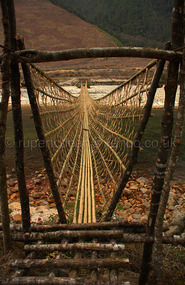
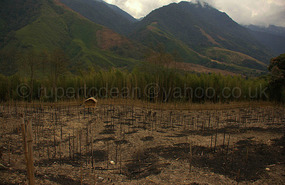
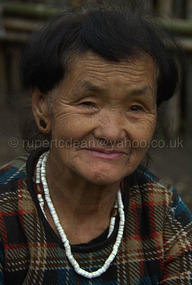
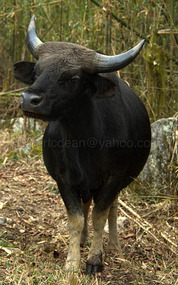
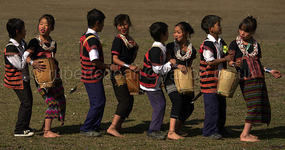
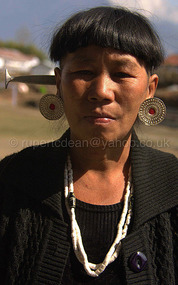
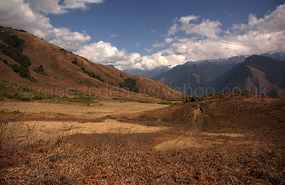
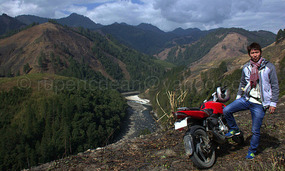
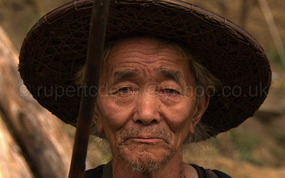



2025-05-22